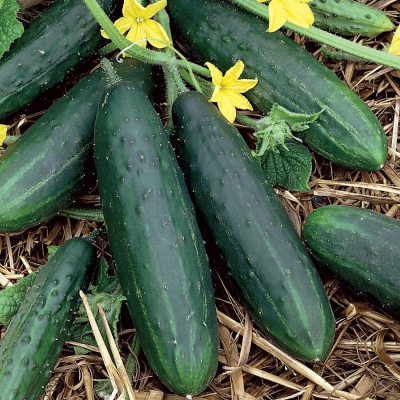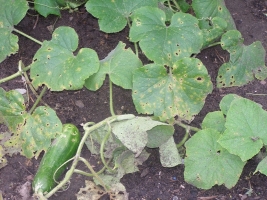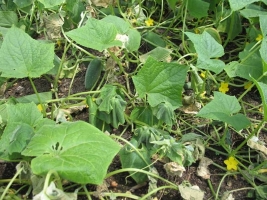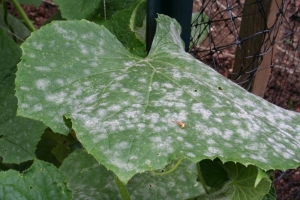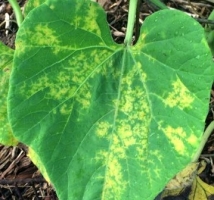Punjab Kheera - 1 (2018): It is only recommended for poly-net houses. The plant is vigorous, producing 1-2 fruits per node. Flowers are parthenocarpic, and the fruits are dark green, seedless, bitter-free, medium in size (125 g), 13-15 cm long, and do not need to be peeled. The first fruit can be picked 45 and 60 days after sowing for September and January crops, respectively. Its average yield is 304 q/acre for September sown crop and 370 q/acre for January sown crop, respectively.
Punjab Naveen (2008): The plants have dark green leaves as having a rough surface. At edible maturity, the fruits are cylinderical with a smooth surface, light green in colour, bitter free, and very crispy, with a single seed. It is of higher quality due to its high dry matter and vitamin C content. From planting to harvesting, it takes 68 days.Taste, appearance, colour, size, and texture are all excellent. It has an average yield of 70 q/acre.
Other state varieties
Pusa Uday: The Indian Agricultural Research Institute created the variety (IARI). This varietys fruits are light green in colour, medium in size, and 15cm long. Per acre of land, use 1.45 kg of seed. The variety matures in 50-55 days. It has a yield of 65 qtl/acre on average.
Pusa Barkha: This variety was created for the Kharif season. It is extremely resistant to humidity, temperature, and downy mildew disease. It has a yield of 78 qtl/acre on average.

